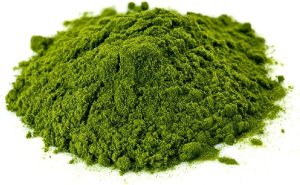
- Overview of Selenium
- Brief History of Selenium
- Functions of Selenium
- Recommended Daily Intake (RDI), Recommended Dietary Allowance (RDA), Adequate Intake (AI), or Reference Nutrient Intake (RNI) for Selenium
- Deficiency of Selenium
- Food Sources of Selenium and Where to Get It From
- Selenium and Its Interaction with Other Medications
- Websites and Articles to Delve into the Benefits of Selenium
- Disclaimer
Overview of Selenium
Selenium, an essential trace element, plays critical roles in maintaining human health. Its primary function involves serving as a key component of selenoproteins, which contribute significantly to antioxidant defense mechanisms. These mechanisms play a crucial role in protecting cells from oxidative stress, supporting overall cellular health. Additionally, selenium is integral for normal thyroid function and contributes to the modulation of the immune system. Adequate selenium intake has been associated with a reduced risk of certain cancers, particularly in regions characterized by low selenium soil content. However, a deficiency in selenium can lead to conditions such as Keshan disease and Kashin-Beck disease, impacting the heart and joints, respectively. Striking a balance in selenium levels through a diverse and well-rounded diet is essential for optimizing overall well-being.
While selenium is vital for health, it’s crucial to note that excessive intake can have harmful effects. Therefore, maintaining an appropriate balance and avoiding both deficiency and excess is essential for harnessing the full benefits of selenium in promoting optimal health.
Brief History of Selenium
The discovery and understanding of selenium trace back to the early 19th century. Here’s a brief history of selenium:
- Isolation by Jöns Jakob Berzelius (1817):
- Swedish chemist Jöns Jakob Berzelius first isolated selenium in 1817. He identified selenium as an element distinct from tellurium and named it after the moon, Selene, due to the similarity between selenium’s properties and tellurium’s.
- Recognition as an Essential Element (1957):
- It wasn’t until the mid-20th century that selenium was recognized as an essential trace element for living organisms. Researchers discovered its role in the function of the enzyme glutathione peroxidase, establishing its importance in antioxidant defense.
- Connection to Keshan Disease (1970s):
- Selenium gained attention in the 1970s when scientists identified its connection to Keshan disease, a potentially fatal heart condition prevalent in certain regions with selenium-deficient soils, particularly in China.
- Selenoproteins and Health Implications (1990s):
- Further research in the 1990s elucidated the role of selenium in the synthesis of selenoproteins, including those with antioxidant properties. This led to a better understanding of its potential impact on health, including cancer prevention.
- Selenium Supplementation Studies:
- Selenium supplementation studies have been conducted to explore its potential benefits in reducing the risk of certain cancers, particularly in areas with selenium-deficient soil.
- Establishment of Dietary Recommendations:
- Based on scientific findings, dietary recommendations for selenium intake have been established to ensure both sufficiency and prevention of toxicity.
Certainly! Here’s the information organized in a table format:
| Event | Description |
|---|---|
| Isolation by Jöns Jakob Berzelius (1817): | Swedish chemist Jöns Jakob Berzelius first isolated selenium in 1817. He identified selenium as an element distinct from tellurium and named it after the moon, Selene, due to the similarity between selenium’s properties and tellurium’s. |
| Recognition as an Essential Element (1957): | It wasn’t until the mid-20th century that selenium was recognized as an essential trace element for living organisms. Researchers discovered its role in the function of the enzyme glutathione peroxidase, establishing its importance in antioxidant defense. |
| Connection to Keshan Disease (1970s): | Selenium gained attention in the 1970s when scientists identified its connection to Keshan disease, a potentially fatal heart condition prevalent in certain regions with selenium-deficient soils, particularly in China. |
| Selenoproteins and Health Implications (1990s): | Further research in the 1990s elucidated the role of selenium in the synthesis of selenoproteins, including those with antioxidant properties. This led to a better understanding of its potential impact on health, including cancer prevention. |
| Selenium Supplementation Studies: | Selenium supplementation studies have been conducted to explore its potential benefits in reducing the risk of certain cancers, particularly in areas with selenium-deficient soil. |
| Establishment of Dietary Recommendations: | Based on scientific findings, dietary recommendations for selenium intake have been established to ensure both sufficiency and prevention of toxicity. |
Selenium’s history reflects a progression from its discovery as a chemical element to its recognition as an essential nutrient with important implications for human health. Ongoing research continues to deepen our understanding of selenium’s roles in biological systems and its impact on various health outcomes.
Functions of Selenium
Selenium plays crucial roles in various physiological functions within the human body. Here are key functions of selenium:
- Antioxidant Defense:
- Selenium is a vital component of selenoproteins, including glutathione peroxidases and thioredoxin reductases, which act as antioxidants. These enzymes protect cells from oxidative damage caused by free radicals.
- Thyroid Function:
- Selenium is essential for the conversion of thyroid hormone thyroxine (T4) to its active form, triiodothyronine (T3). This is crucial for maintaining proper thyroid function and regulating metabolism.
- Immune System Support:
- Selenium is involved in the regulation of immune responses. It contributes to the proper functioning of immune cells and helps modulate inflammatory processes.
- Reproductive Health:
- Selenium is important for both male and female reproductive health. It plays a role in sperm motility and development, and it is involved in protecting developing embryos from oxidative stress.
- Cancer Prevention:
- Some studies suggest that selenium may have a role in reducing the risk of certain cancers, particularly those affecting the prostate, colorectal, and lungs. However, the relationship is complex and context-dependent.
- Heart Health:
- Selenium may contribute to cardiovascular health by helping to prevent oxidative damage to blood vessels and supporting overall heart function.
- Cognitive Function:
- Selenium has been associated with cognitive function, and adequate levels may play a role in maintaining optimal brain health.
- Joint Health:
- Selenium is implicated in protecting joints and may have a role in preventing conditions like Kashin-Beck disease, a joint disorder prevalent in selenium-deficient areas.
- Mood and Mental Health:
- Some research suggests a potential link between selenium levels and mood disorders. Selenium may have a role in mental health, although more research is needed to establish clear connections.
- Hair and Nail Health:
- Selenium is associated with the health of hair and nails. Adequate levels may contribute to their strength and integrity.
While selenium is essential for health, it’s important to note that excessive intake can lead to toxicity. Maintaining a balanced diet that includes selenium-rich foods is generally sufficient to meet the body’s needs. As with any nutrient, it’s advisable to consult with healthcare professionals for personalized guidance on dietary intake.
Recommended Daily Intake (RDI), Recommended Dietary Allowance (RDA), Adequate Intake (AI), or Reference Nutrient Intake (RNI) for Selenium
The dietary recommendations for selenium are typically expressed as Recommended Dietary Allowance (RDA) or Adequate Intake (AI). Here are the values for selenium:
- Recommended Dietary Allowance (RDA) for Selenium:
- The RDA is the average daily dietary intake sufficient to meet the nutrient requirements of nearly all (97-98%) healthy individuals.
- The RDA for selenium varies by age and gender. As a general guideline for adults:
- 55 micrograms (mcg) per day for both men and women.
- Adequate Intake (AI) for Selenium:
- The Adequate Intake is set when there is insufficient scientific evidence to establish an RDA. It is assumed to cover the nutrient needs of individuals.
- The AI for selenium is generally similar to the RDA. For adults:
- 55 mcg per day for both men and women.
Certainly! Here’s the information organized in a table format:
| Nutrient | Recommended Dietary Allowance (RDA) | Adequate Intake (AI) |
|---|---|---|
| Selenium | 55 micrograms (mcg) per day for both men and women | 55 mcg per day for both men and women |
- Recommended Dietary Allowance (RDA) for Selenium:
- The RDA is the average daily dietary intake sufficient to meet the nutrient requirements of nearly all (97-98%) healthy individuals.
- For adults, the RDA for selenium is 55 micrograms (mcg) per day for both men and women.
- Adequate Intake (AI) for Selenium:
- The Adequate Intake is set when there is insufficient scientific evidence to establish an RDA. It is assumed to cover the nutrient needs of individuals.
- The AI for selenium is generally similar to the RDA, and for adults, it is set at 55 mcg per day for both men and women.
These recommendations may vary for specific population groups, such as pregnant and lactating women. It’s important to note that individual selenium needs can be influenced by factors like age, sex, health status, and life stage.
For the most current and specific dietary recommendations, it’s advisable to consult authoritative sources such as health organizations, dietary guidelines, or healthcare professionals. Nutrient recommendations can be subject to updates or revisions based on ongoing research and scientific advancements.
Deficiency of Selenium
Selenium deficiency can have various health implications, and it is associated with certain medical conditions. Here are some potential signs and effects of selenium deficiency:
- Cardiomyopathy:
- Selenium deficiency has been linked to a condition called Keshan disease, which primarily affects the heart. It can lead to cardiomyopathy, an illness characterized by weakness and enlargement of the heart muscle.
- Muscle Weakness and Fatigue:
- Selenium is involved in muscle function, and deficiency may contribute to muscle weakness and fatigue.
- Joint and Bone Issues:
- Selenium deficiency has been associated with Kashin-Beck disease, a condition that affects the joints and bones. It can lead to pain, swelling, and deformities in the joints.
- Compromised Immune Function:
- Selenium plays a role in immune system function. Deficiency may impair the body’s ability to mount an effective immune response.
- Thyroid Dysfunction:
- Selenium is essential for the conversion of the thyroid hormone T4 to its active form T3. Deficiency may contribute to thyroid dysfunction.
- Increased Risk of Certain Cancers:
- Some studies suggest that selenium deficiency may be associated with an increased risk of certain cancers, although the relationship is complex and may vary by individual and region.
- Male Infertility:
- Selenium is important for sperm motility and function. Deficiency may contribute to male infertility.
- Mood and Mental Health Issues:
- While research is ongoing, some studies have explored the potential links between selenium deficiency and mood disorders. Low selenium levels may be associated with certain mental health issues.
- Hair and Nail Problems:
- Selenium deficiency may affect the health of hair and nails, leading to brittleness and changes in texture.
It’s important to note that selenium deficiency is rare in regions where the soil contains sufficient selenium, as most dietary selenium comes from plant and animal sources. However, in areas with selenium-deficient soil, health issues related to selenium deficiency can be more prevalent.
If you suspect a selenium deficiency or experience symptoms associated with it, it’s crucial to consult with a healthcare professional. They can assess your nutritional status, recommend appropriate interventions, and address any underlying health concerns.
Food Sources of Selenium and Where to Get It From
Selenium is present in various foods, and obtaining it through a balanced diet is the most effective way to meet your nutritional needs. Here are some food sources of selenium and ideas on where to incorporate them into your meals:
- Brazil Nuts:
- Eating just a few brazil nuts can provide a significant amount of selenium. Snack on them or incorporate chopped brazil nuts into yogurt, salads, or oatmeal.
- Fish (Tuna, Halibut, Sardines):
- Grill or bake fish as a main course. Canned tuna and sardines are convenient options for sandwiches or salads.
- Meat (Beef, Chicken, Turkey):
- Include lean cuts of meat in your meals, such as grilled chicken or turkey. Beef can be part of stews, stir-fries, or grilled dishes.
- Whole Grains (Brown Rice, Quinoa):
- Cook brown rice or quinoa as a side dish or use them as a base for bowls, salads, or stir-fries.
- Eggs:
- Eggs are versatile and can be enjoyed in various ways, including scrambled, boiled, or as an omelet.
- Dairy Products (Milk, Yogurt):
- Enjoy a glass of milk or incorporate yogurt into smoothies, parfaits, or as a standalone snack.
- Sunflower Seeds:
- Snack on sunflower seeds, or sprinkle them on salads, yogurt, or cereal for added crunch.
- Spinach:
- Add fresh spinach to salads, sandwiches, or incorporate it into cooked dishes like omelets and casseroles.
- Broccoli:
- Steam or stir-fry broccoli as a side dish, or add it to pasta dishes and salads.
- Mushrooms:
- Add mushrooms to omelets, stir-fries, soups, or use them as a pizza topping.
- Garlic:
- Use garlic in various savory dishes, such as pasta, stir-fries, and roasted vegetables.
- Onions:
- Incorporate onions into savory dishes, soups, stews, or use them as a base for sauces.
Eating a diverse and balanced diet that includes a mix of these selenium-rich foods can help ensure that you meet your nutritional requirements. Keep in mind that the selenium content in plant-based foods depends on the selenium content in the soil where they are grown. If you have specific dietary concerns or restrictions, consider consulting with a healthcare professional or a registered dietitian for personalized guidance.
Selenium and Its Interaction with Other Medications
Selenium interactions with medications are not extensively studied, and selenium is generally considered safe when consumed within recommended dietary levels. However, there are a few considerations regarding the potential interactions of selenium with certain medications:
- Anticoagulants (Blood Thinners):
- Selenium supplements may interact with anticoagulant medications, such as warfarin, by potentially increasing the risk of bleeding. If you are taking blood thinners, it’s advisable to discuss selenium supplementation with your healthcare provider.
- Antiplatelet Drugs:
- Similar to anticoagulants, antiplatelet medications like aspirin may interact with selenium supplements, potentially increasing the risk of bleeding. Consult with your healthcare provider if you are considering selenium supplementation.
- Chemotherapy Drugs:
- Selenium may interact with certain chemotherapy drugs. If you are undergoing cancer treatment, it’s essential to discuss any selenium supplements or dietary changes with your oncologist.
- Lithium:
- Selenium supplements may increase lithium levels in the blood, potentially leading to lithium toxicity. If you are taking lithium for mood disorders, consult your healthcare provider before taking selenium supplements.
Always inform your healthcare provider about any supplements you are taking, including selenium, as they can provide personalized advice based on your specific health conditions and medication regimen. It’s crucial to avoid excessive selenium intake, as high levels can lead to toxicity, known as selenosis, which can cause symptoms such as nausea, diarrhea, hair loss, and nerve damage.
For most individuals, obtaining selenium through a balanced diet that includes selenium-rich foods is sufficient. If you have concerns about selenium interactions with specific medications, consult with your healthcare provider for guidance tailored to your individual health needs.
Websites and Articles to Delve into the Benefits of Selenium
Certainly! Here’s a brief overview of selenium along with information from the provided websites:
- WebMD – Supplement Guide Selenium:
- WebMD – Supplement Guide Selenium provides a comprehensive guide to selenium supplements, including information on uses, dosage, and potential side effects.
- WebMD – Selenium:
- WebMD – Selenium offers general information on selenium, its sources, potential benefits, and precautions.
- Drugs.com – Selenium:
- Drugs.com – Selenium provides details on selenium, including its uses, side effects, and interactions with other medications.
- Healthline – Selenium Benefits:
- Healthline – Selenium Benefits explores the various benefits of selenium, including its role as an antioxidant and its potential impact on health.
- Mayo Clinic – Selenium Supplement (Oral Route):
- Mayo Clinic – Selenium Supplement (Oral Route) provides information on selenium supplements, their description, and proper use.
- Mount Sinai – Selenium:
- Mount Sinai – Selenium offers information on selenium supplements and their potential health benefits.
- MedicineNet – Selenium:
- MedicineNet – Selenium provides an article on selenium, discussing its sources, benefits, and potential risks.
- Medical News Today – Selenium:
- Medical News Today – Selenium explores the health benefits and dietary sources of selenium.
- Everyday Health – Selenium:
- Everyday Health – Selenium provides information on selenium, its uses, and potential interactions with medications.
- Vinmec – Uses of Selenium:
- Vinmec – Uses of Selenium discusses the uses of selenium in medicine and its safe use.
- Health.com – Selenium Benefits:
- Health.com – Selenium Benefits highlights the potential benefits of selenium for health.
- Cleveland Clinic – Selenium Capsules or Tablets:
- Cleveland Clinic – Selenium Capsules or Tablets provides information on selenium in capsule or tablet form.
- Harvard T.H. Chan School of Public Health – Selenium:
- Harvard T.H. Chan School of Public Health – Selenium offers information on selenium as a micronutrient and its role in health.
- Dr. Axe – Selenium Benefits:
- Dr. Axe – Selenium Benefits discusses the nutritional benefits of selenium.
- Verywell Health – Selenium Benefits, Side Effects, and More:
- Verywell Health – Selenium Benefits, Side Effects, and More provides comprehensive information on selenium, covering benefits, side effects, and more.
- Ada – Micronutrients: Selenium:
- Ada – Micronutrients: Selenium offers information on selenium as a micronutrient, including its role in the body and dietary sources.
Disclaimer
The information is solely provided for educational purposes. It is not intended to diagnose, treat, cure, or prevent any disease. Seek the advice of your physician or qualified healthcare provider with any questions you may have regarding a medical condition at all times. Never disregard professional medical advice because of something you have read or learned from this article.






